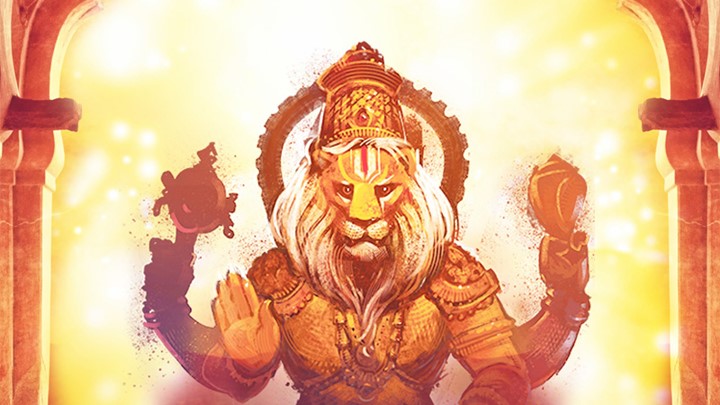
“Narasimha” is the fourth avatar (incarnation) of Lord Vishnu in Hindu mythology. The term “Narasimha” is derived from two Sanskrit words, “Nara,” meaning man, and “Simha,” meaning lion. The Narasimha Avatar is a unique and powerful form in which Lord Vishnu appears as a half-man, half-lion deity. This incarnation is particularly known for the destruction of the demon king Hiranyakashipu.
The story of Narasimha Avatar is as follows:
- Hiranyakashipu’s Boon: Hiranyakashipu, a demon king, performed severe penance to please Lord Brahma. Pleased with his devotion, Brahma granted him a boon, which made him virtually indestructible. Hiranyakashipu asked for several conditions, including the assurance that he could not be killed by man or beast, during day or night, inside or outside, on the ground or in the sky.
- Birth of Prahlada: Despite his demonic nature, Hiranyakashipu’s son, Prahlada, was a devoted follower of Lord Vishnu. This devotion angered Hiranyakashipu, who tried to force Prahlada to renounce his faith.
- Emergence of Narasimha: Hiranyakashipu, unable to tolerate his son’s devotion to Vishnu, challenged Prahlada to show him where Vishnu resided. Prahlada replied that Vishnu is present everywhere, even in the smallest atom. This enraged Hiranyakashipu, who struck a pillar in his palace with his mace.
- Narasimha’s Appearance: To fulfill the conditions of the boon and protect Prahlada, Lord Vishnu emerged from the broken pillar in the fearsome form of Narasimha—a half-man, half-lion being. It was twilight, neither day nor night, and Narasimha was neither inside nor outside, but on the threshold.
- Battle with Hiranyakashipu: A fierce battle ensued between Narasimha and Hiranyakashipu. Narasimha took Hiranyakashipu to the threshold, placed him on his lap, and using his lion-like claws, tore apart the demon king. This happened at dusk, fulfilling the conditions of the boon.
- Prahlada’s Devotion: Prahlada, unaffected by the terrifying form of Narasimha, approached him with humility and devotion. Lord Vishnu, pleased with Prahlada’s devotion, calmed down and blessed him.
The Narasimha Avatar symbolizes the victory of good over evil, the protection of the righteous, and the omnipresence of the divine. It is a powerful and iconic depiction in Hindu mythology, often portrayed in art, literature, and religious rituals. The festival of Narasimha Jayanti is celebrated by devotees to honor this significant incarnation of Lord Vishnu.
